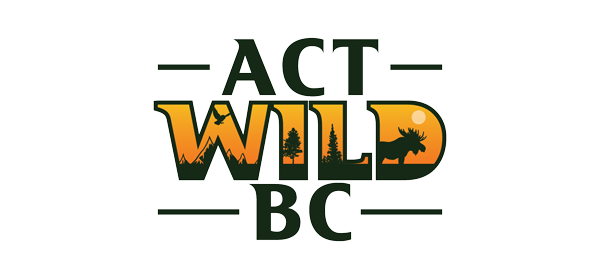Moose in B.C.
Moose (Scientific Name: Alces Alces)
Did you know Moose are excellent swimmers?
Despite their large size, moose are surprisingly adept swimmers. They can paddle through water at speeds of up to 6 miles per hour (9.7 km/h) and can even swim long distances, sometimes several miles, in search of food or to escape predators.
Introduction
Moose are an iconic part of British Columbia’s fauna that have environmental, economic, social, and cultural importance. First Nations rely on moose for social, ceremonial, and sustenance purposes. Moose also provide recreational opportunities to resident and non-resident hunters, and their harvest provides economic benefits through the sale of hunting licenses and associated expenditures. In the last 10 to 15 years, moose populations in some parts of B.C. have declined between 50 and 70% and researchers are finding that predation is the leading cause of death in both female adult moose and calf populations in the Interior (BCWF, 2021).
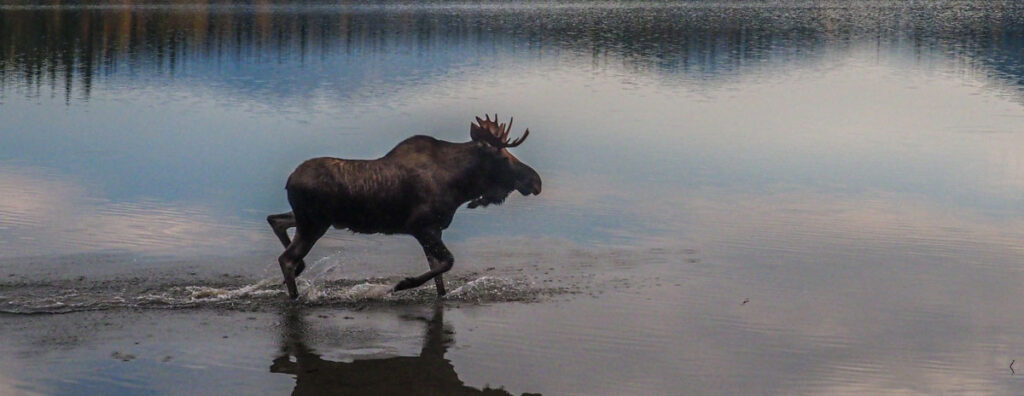
Cultural Value
Moose are important in both Indigenous and Western cultures and tend to be abundant throughout British Columbia. Moose provide sustenance and materials for First Nation Peoples, as well as inform social relationships and cultural traditions. Sustainable harvesting of moose bolsters local food security in indigenous and non-indigenous communities alike.
Moose are a conspicuous and iconic part of British Columbia’s fauna that have environmental, economic, social and cultural importance. First Nations rely on moose for social, ceremonial, and sustenance purposes.
Distribution & Population
Moose are generally abundant and widely distributed throughout most of B.C, with an estimated population ranging between 157,000 and 190,000 (Kuzyk 2016). Over 70% of moose live in northern B.C., although population densities vary greatly by region. A host of factors influence moose populations including suitable habitat, forage availability, and predation.
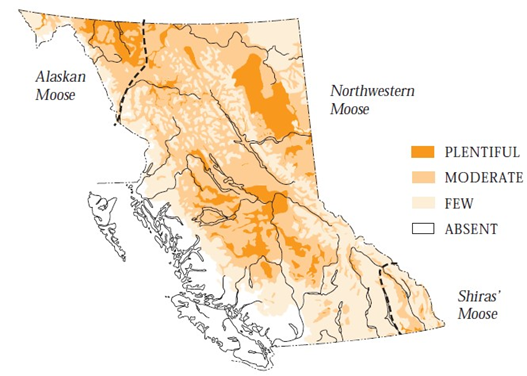
Distribution and Abundance of Moose in B.C. (Gov. BC)
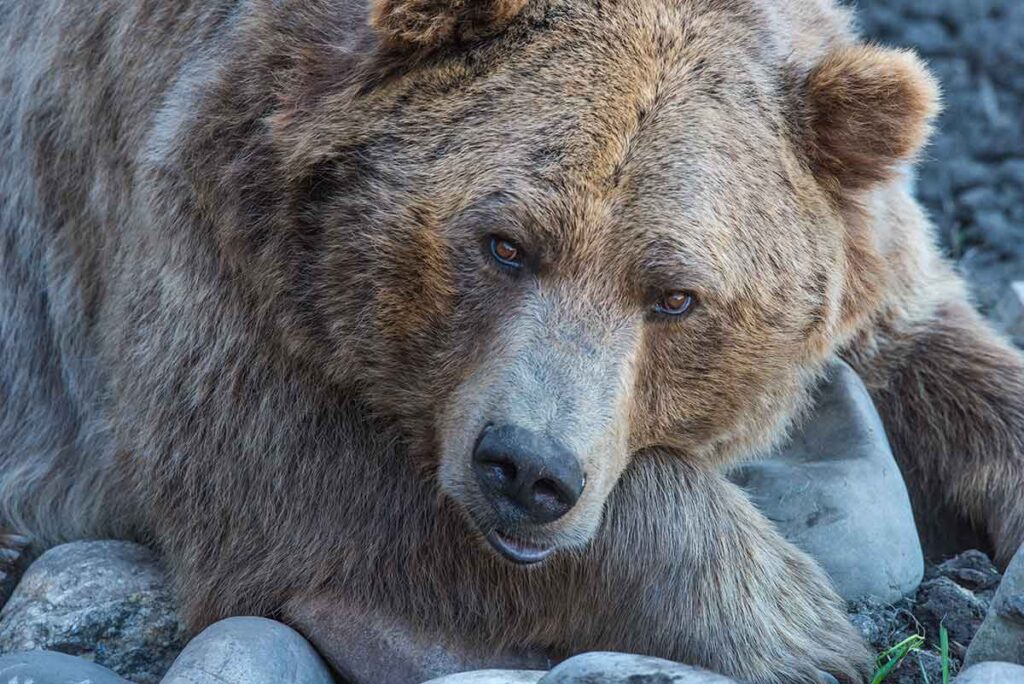
“A leading cause of Moose declines is predation by bears & wolves.”
Canadian Parks & Wilderness Society – Save Our Moose, Moose Predators
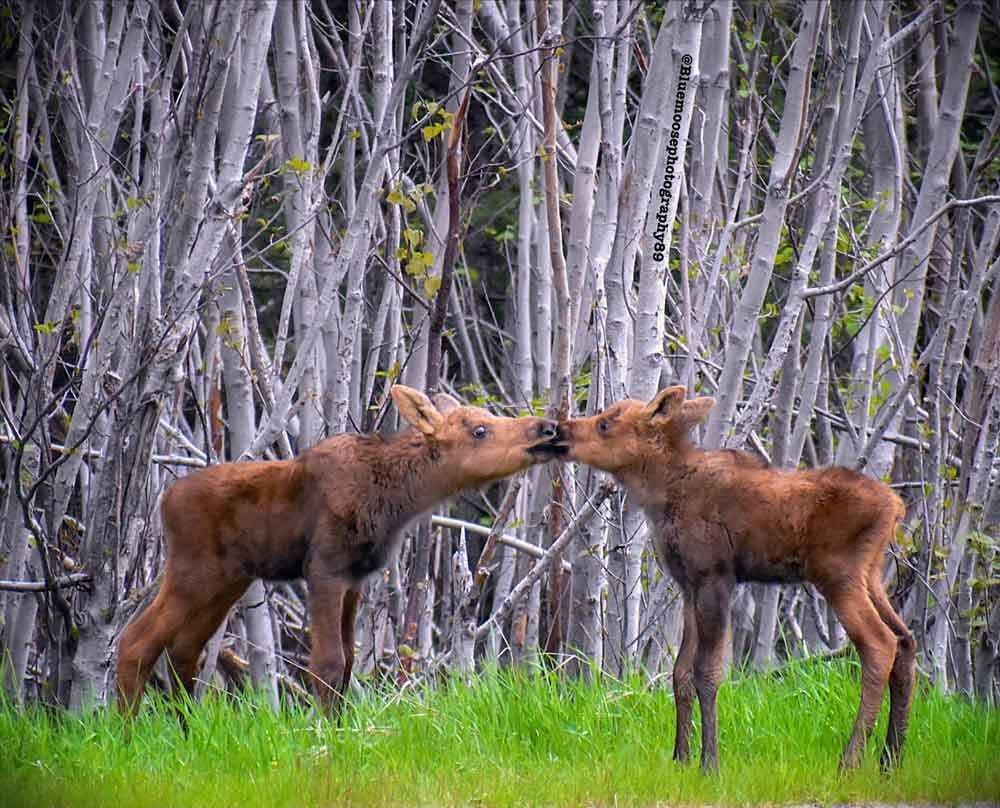
Research, proper funding & management tools, habitat restoration & predator management will be required to recover moose in British Columbia.
In The News
Wolves, habitat changes decimating Interior B.C. moose populations
In the last 10 to 15 years, moose populations across B.C. have declined between 50 to 70% and researchers are finding wolves are the leading cause of death in both female adult moose and calf populations in the Interior.
Moose declining in Peace Region
Projects like the Site C Hyrdoelectric dam affect the Peace River ecosystem including on the shores where moose are found. Johnson said “These are terrestrial animals. You flood their habit. That habit has very little value to them now.”
Moose in BC: What’s driving the declines?
Goverment of B.C.
In 2013, the Province of BC initiated a research project to determine the factors affecting moose population changes in central BC. This video describes the progress and results to date from that work. This research is focused on developing management recommendations aimed at improving moose abundance.
Fun Fact
Moose have a “bell” under their chin: One of the distinctive features of a moose is the flap of skin, called a “bell,” that hangs under their chin.
While its exact purpose is not fully understood, it is believed that the bell helps amplify their vocalizations during the mating season, making their calls more resonant and impressive.


Impacts
Moose are a wide-ranging species that depend on connected and functioning habitat with properly functioning ecosystem processes. As such, moose are susceptible to cumulative impacts on their habitat and their populations from land use activities and disturbances. As a species that can tolerate, and may even benefit from, some types of disturbance on the landscape, moose-human interactions are common and complex.
Recent moose population declines have been realized in regions subject to the mountain pine beetle epidemic, which led to salvage logging and associated road building. These types of landscape disturbances can alter the relationship between moose and their predators and make access easier for hunters. Beneficial forage generated after landscape disturbance may not be realized immediately, and any benefit may be offset by increased hunter pressure and predation (Kuzyk 2016).
Low calf survival, adult mortality from wolf and grizzly bear predation, illegal harvest, and low predator harvest all have negative impacts on moose populations. Predation on moose calves by bears and wolves can be quite high, with mortalities as high as 30% occurring in the first year of life (Bertram and Vivion, 2002, BCWF 2021).
- Habitat Conservation
- Wildlife Funding
- Predator Management
- Public Awareness
Conservation
Research programs are currently underway in the province, supported by the Provincial Government, academic institutions, and not-for-profit organizations. Key findings to date show:
- Predation, predominantly by wolves and bears, accounts for 58% of cow moose mortality,
- Cow survival rates in some areas of the province are high enough to support increasing populations, but population numbers continue to decline,
- Calf mortality occurs during their first summer and in late winter and early spring. This mortality appears to be the main contributing factor to the population declines, and
- Fair to poor body condition in cow moose. Body condition is a key factor in the ability of cow moose to produce and sustain healthy calves (Gov. BC 2023, FWCP 2019).
Research is needed to further explore the relationships between moose populations and hunter harvest, predation, landscape changes, and a changing climate. Moose population estimates and harvest data should continue to be monitored on a regular basis to improve the understanding of the status of moose in B.C. (Kuzyk 2016).
By understanding the factors that are responsible for the declining moose population in our Province, it will enable us to restore those populations more effectively through habitat enhancement measures, management practices, and predator management in an integrated, ecosystem-based approach. The future of moose in British Columbia depends on it.
References:
BCWF, 2021. Factors affecting moose populations in Interior British Columbia: Research update, Feb 2012- May 2020. Webinar presented by Chris Proctor, Senior Wildlife Biologist, Kamloops, B.C.
NRESi Colloquium - February 17th, 2023 - Dr. Jeff Werner
Wolves, Hunters and Starvation Main Killers of BC’s Moose
Andrew MacLeod 10 Jan 2017 TheTyee.ca
The main killers of moose in an ongoing study in British Columbia have been wolves, unlicensed hunters and starvation.
Coming Soon
Endangered Badgers
Mule Deer
Caribou
Burrowing Owls
